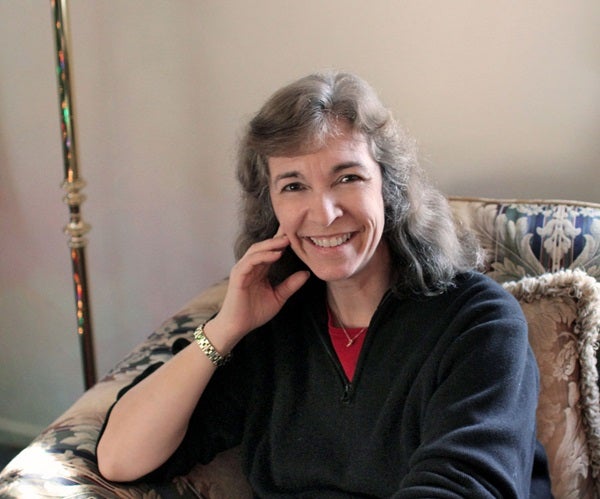Take Maria Mitchell (1818–1889), America’s first female professional astronomer. If you’re ever on the enchanted island of Nantucket off the coast of Massachusetts, you can visit her old house and observatory, where she became instantly famous in 1847 by discovering a comet. It’s hard not to love this long-gone woman who wrote, “Standing under the canopy of stars … you could scarcely do a petty deed.”
Her story had a rare happy ending as she became the very first professor at a brand new college named Vassar. But few others fared as well. Annie Maunder’s (1868–1947) acute mind played a big behind-the-scenes role in the success of 19th-century solar pioneer Edward Maunder when the British couple clarified the 11-year sunspot cycle. Yet, despite being voted mathematician of the year at Cambridge University and passing her final qualifying exam, she was denied a degree simply because she was a woman.
Such discrimination continued. At the famous 200-inch Hale Telescope on Palomar Mountain in California, women were simply not welcome. And when Jocelyn Bell Burnell discovered pulsars in 1967, the revelation won a Nobel Prize — for her research advisor, who did little of the work. Burnell wasn’t even mentioned.
Into this disgraceful legacy came Debra Meloy Elmegreen. Now completing her two-year presidency of the American Astronomical Society (AAS), this woman represents our nation’s professionals.
I’ve interviewed many of our top brilliant women, like the Carnegie Observatories’ Wendy Freedman and planetary guru Heidi Hammel, and wish I had crossed paths with Vera Rubin, now in her 80s, famous for her groundbreaking dark-matter work even though she couldn’t get into Princeton’s graduate program because it was men only. But I’ll let Elmegreen serve as sort of our breakthrough woman astronomer.
She also has guts. Maybe 15 years ago, I invited her to be my guest on a radio call-in show, and she agreed even though it meant flying 45 minutes to another city in my beat-up four-seat hippie plane. So, this first-ever “Strange Universe” bio has a dual purpose: first, to do my part to help erase that terrible anti-woman astro-legacy; and second, to salute the person who has been the official spokesmammal for American astronomers since 2010.
Elmegreen grew up in Fairfax, Virginia. As a teenager, she ground her own telescope mirror and built a 16-square-foot (1.5 square meters) shortwave receiver to study Jupiter. She then wrote an article for this magazine (“Tuning In On Radio Astronomy: Building Your Own Radio Telescopes,” December 1977) and won all sorts of Westinghouse and other science fairs. The consummate geek, she’d hold star parties in her backyard. The magazine Seventeen decided to do an “Up and Coming Teen” feature on her, but when they asked Elmegreen for her astrological sign and whether Jupiter was in her horoscope, she disclaimed that nonsense, so the publication killed the article.
No matter. She got her bachelor’s degree in astronomy from Princeton University — the first woman to do so — and then her master’s and doctorate from Harvard. “In those rare moments of total quiet with a dark sky, I again feel the awe that struck me as a child,” she says. “I enjoy observing galaxies at optical, infrared, and radio wavelengths, and hope to contribute more to the understanding of galaxy star formation and structure in galaxies.”
She already has. As Vassar’s Maria Mitchell Professor of Astronomy, she often uses the Hubble Space Telescope and is especially focused on colliding galaxies and how their structure in the early universe is so different from those today. It was she who coined the term flocculent galaxy for bizarre ones like NGC 7793 that have many short chaotic arms instead of the two elegant spirals displayed by “grand design” galaxies.
Despite her research workload, she teaches five courses a year at Vassar, while her duties as AAS president take her to places like Congress and the Vatican.
When the movie Thor came out starring Natalie Portman as an astrophysicist, a magazine cited Elmegreen as the real-life model. Indeed, the portrayal of fictional female astronomers like comet-observing Darryl Hannah in the film Roxanne and alien-searching Jodie Foster in Contact shows how far we’ve recently come. Although just 22 percent of professional astronomers are women, for the under-30 pool the number has now grown to 40 percent.
For the moment, though, I guess we can live with “the man in the Moon.”
Contact me about my strange universe by visiting http://skymanbob.com.











